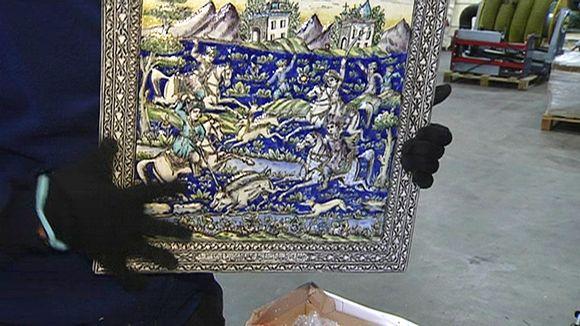Art
ISIS Funded by Mass Art Looting
The research into the provenance of some artwork can reveal surprising twists and turns. Finding out the art you bought and cherish is a looted antiquity is a discovery that’s not exactly unique to the modern-day art world. For centuries robbers have been looting tombs, stealing priceless pieces of art, sculptures and other artifacts that they resell for major profits. How has looting changed over the years? It hasn’t – at least not by much. While the days of breaking into tombs or digging up art-filled graves have been replaced by more high-tech means, the crime is still the same.
One of the most well-known cases of art theft was perpetrated by the Nazi’s during World War II. The mass looting resulted in more than 650,000 works going missing. Many of the pieces have been ‘hiding’ in plain sight for decades. Hung on the walls of some of Europe’s most prestigious museums, paintings by the likes of Monet and Rubens were sold to museums, where they remained – despite knowledge of their true origins. Forty-four countries signed a deal in 1998 to find, recover and return the looted art. That said, not every country has been completely committed to returning the stolen works.
More recently, ISIS has been the culprit behind mass art looting. When the extremist group isn’t destroying the artifacts found in historic Middle Eastern sites, it is using the sale proceeds of the stolen art to fund their terror campaigns. It’s thought that the sale of stolen art and antiquities is now the second-largest revenue stream for ISIS. Using social media and the Internet to sell the looted artworks, ISIS has faked the background of the pieces and sold them to unsuspecting buyers around the world. Reportedly, members of the organization attempted to sell a Mesopotamian vase that was worth $250,000. The sale attempt was made via Whatsapp.
While tomb raiding was a popular crime of the past, it still remains a modern problem. In Jordan archeologists are using drones to map where and when looting is happening. The photos that the drones take from overhead allows researchers to see the extent of the problem and to figure out how these historical sites are changing over time. Seeing the changes over time allows them to assess the continuing problem. In areas with high unemployment rates, such as Jordan, looting is a way for local thieves to make money. The works are often sold to a middleman who then turns them over to dealers in Europe and America.









